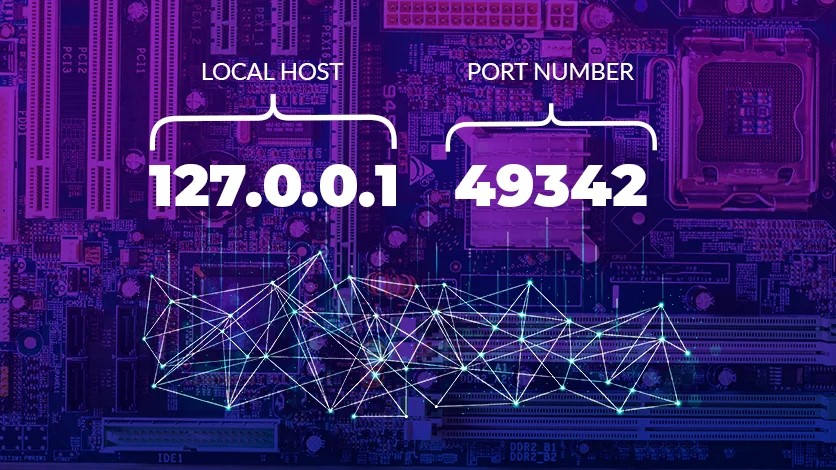The designation 127.0.0.1:49342 signifies a specific amalgamation of an IP address and a port number, particularly employed within the domain of local networking. The IP address 127.0.0.1 serves as the conventional designation for localhost, indicating the machine you are presently operating. The port 49342 serves as a designated identifier that applications may utilize for the purpose of communication. Within the domain of networking, the address 127.0.0.1:49342 is frequently employed by developers and IT specialists for the purposes of testing and troubleshooting applications on their local systems. This functions as a loopback address, enabling network software to engage in communication with itself while remaining within the confines of the host system.
Components Of Networking
IP Address:
Every device connected to a network is assigned a unique identifier known as an Internet Protocol (IP) address. It enables the transmission of information between devices across the internet or within local networks. There is two types of IP Addresses:
- IPv4: addresses consist of 32-bit numeric representations expressed in decimal format (e.g., 192.168.1.1).
- IPv6: addresses are characterized by their 128-bit alphanumeric structure. These IP Addresses are created to overcome the limitation of IPV4.
Local Hosting:
The computer which is used to establish networking connection operating is called Localhost denotes the machine you are presently utilizing, facilitating its connection to network services operating on the identical device. This is chiefly employed for testing and development. The IP address 127.0.0.1 is designated for loopback traffic, indicating that any data directed to this address is returned to the originating machine. It is essential for the analysis and resolution of network issues.
Port Numbers
Port numbers are dedicated numerical numbers within networking. These port numbers facilitate the identification of various services or applications on a device. The range spans from 0 to 65535, with particular ports allocated for designated functions, recognized and established standards in the field. Each port serves a specific function in network communication, delineating various types of traffic. The port numbers divided into three types:
- 80 for HTTP.
- 443 for HTTPS.
- 22 for SSH.
127.0.0.1:49342: Common Troubleshooting Error
The various services and programs operating on a computer are identified by their respective port numbers. For applications that need to establish temporary connections for network communications, the ephemeral port 49342 is a common choice. Some common port number issues are:
Common Port Issues:
- Port Conflict: Port Conflict error happens when multiple applications use the same port. Therefore must confirm before the specific application use the specific port
- Firewall Blocking: Some Firewall Restrictions are also caused to give port error. Therefore, you remove firewall settings that block traffic on the port.
- Incorrect Setting: The incorrect setting also cause of showing network configuration errors.
- Port Properly working: Still facing to establish connection with
127.0.0.1:49342, then you must verify that ports are properly working and the service you expect to listen on this port properly configured or not.
Common Error Messages
This message appear while trying to reach this URL could vary depending on the service or application that is using that port. Some common error messages you may encounter are as follows:
- Connection Refused:
- Message:
ERR_CONNECTION_REFUSED - Cause: The server at 127.0.0.1:49342 is not running or is not accepting connections on that port.
- Solution: Ensure the server is running and configured to listen on port 49342.
- Message:
- Connection Timed Out:
- Message:
ERR_CONNECTION_TIMED_OUT - Cause: The server is not responding to the connection attempt within the expected time frame.
- Solution: Check network configurations, ensure the server is running, and verify that there are no firewall rules blocking the connection.
- Message:
- 502 Bad Gateway:
- Message:
502 Bad Gateway - Cause: The server acting as a gateway or proxy received an invalid response from the upstream server.
- Solution: Check the configuration of the gateway or proxy server and ensure the upstream server is working correctly.
- Message:
- 401 Unauthorized:
- Message:
401 Unauthorized - Cause: The request requires user authentication.
- Solution: Provide valid authentication credentials.
- Message:
- 403 Forbidden:
- Message:
403 Forbidden - Cause: The server understands the request but refuses to authorize it.
- Solution: Ensure you have the necessary permissions to access the resource.
- Message:
Tips for Diagnose Issue
- Use Common Diagnosed Commands: Use common diagnostic commands such as:
- Ping: Verifies the functionality of the local machine’s network stack through ping 127.0.0.1
- netstat -an: Provides a comprehensive overview of all active connections and ports that are currently listening.
- tracert 127.0.0.1: Analyzes the pathway that packets traverse to arrive at the localhost.
- Use Tools for networking diagnosing: Employ diagnostic tools like ping, tracert, and netstat to analyze and resolve network-related problems. These instruments facilitate the identification of connectivity issues and offer valuable insights into the performance of the network.
- Examining Logs and Reports: Analyzing system and application logs can yield significant insights regarding errors and events that contribute to the problem at hand. Logs frequently encompass timestamps, error codes, and various diagnostic details that can accurately identify the origin of the issue.
Editors Remarks
The IP address 127.0.0.1:49342 denotes a particular arrangement of the loopback address alongside the port number, facilitating local network communication. Grasping the nuances of this setup can significantly refine your development, testing, and debugging methodologies. For developers engaged in the creation of innovative applications or network administrators addressing complex network challenges, a profound understanding of localhost and designated port numbers is essential for effective and secure network oversight.
To gain deeper insights into the utilization of 127.0.0.1 and the intricacies of port configurations, it would be prudent to delve into comprehensive network documentation or to participate in discussions within online communities dedicated to network development and security.
More on Freethegeek.fm
